
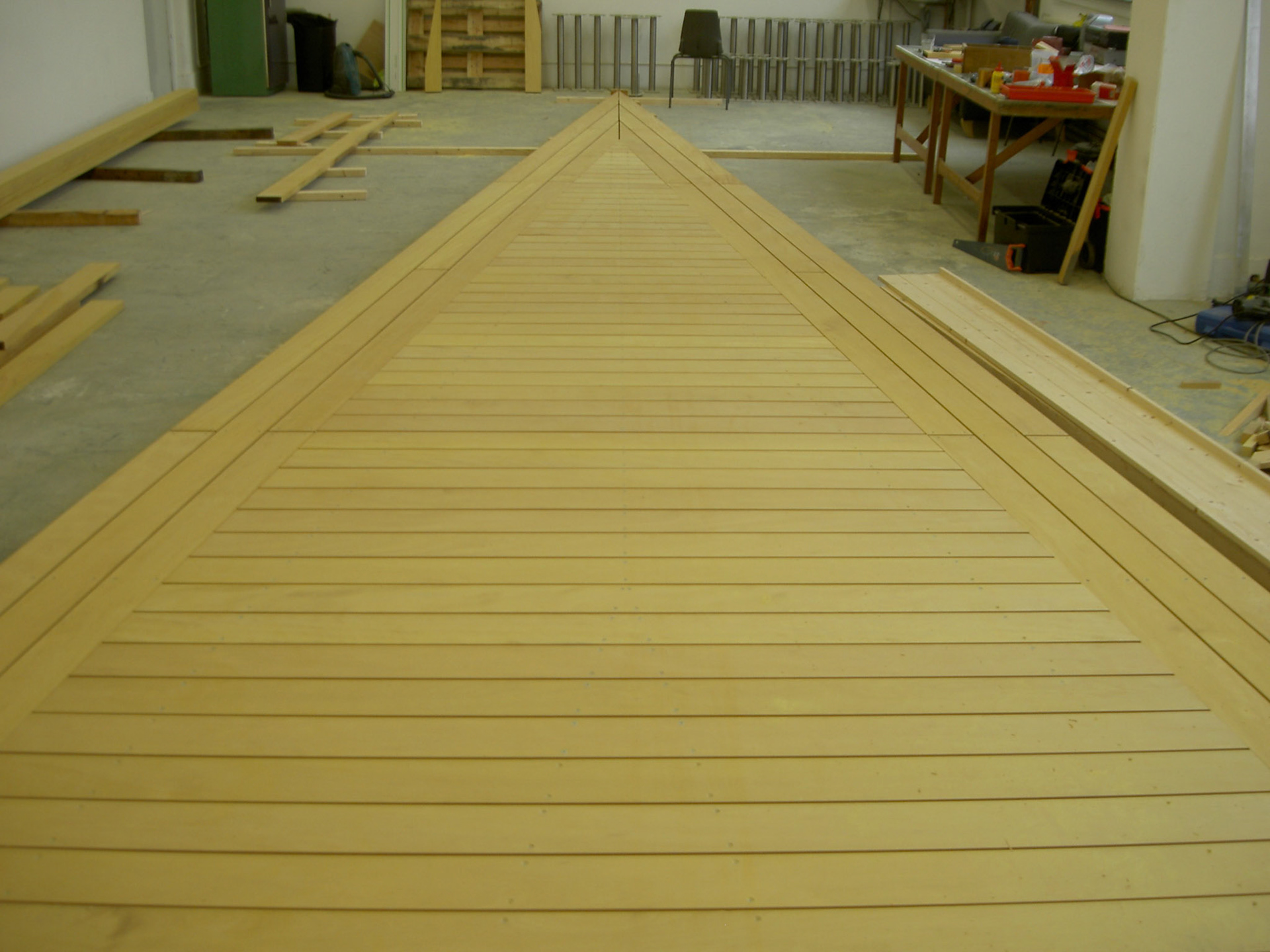
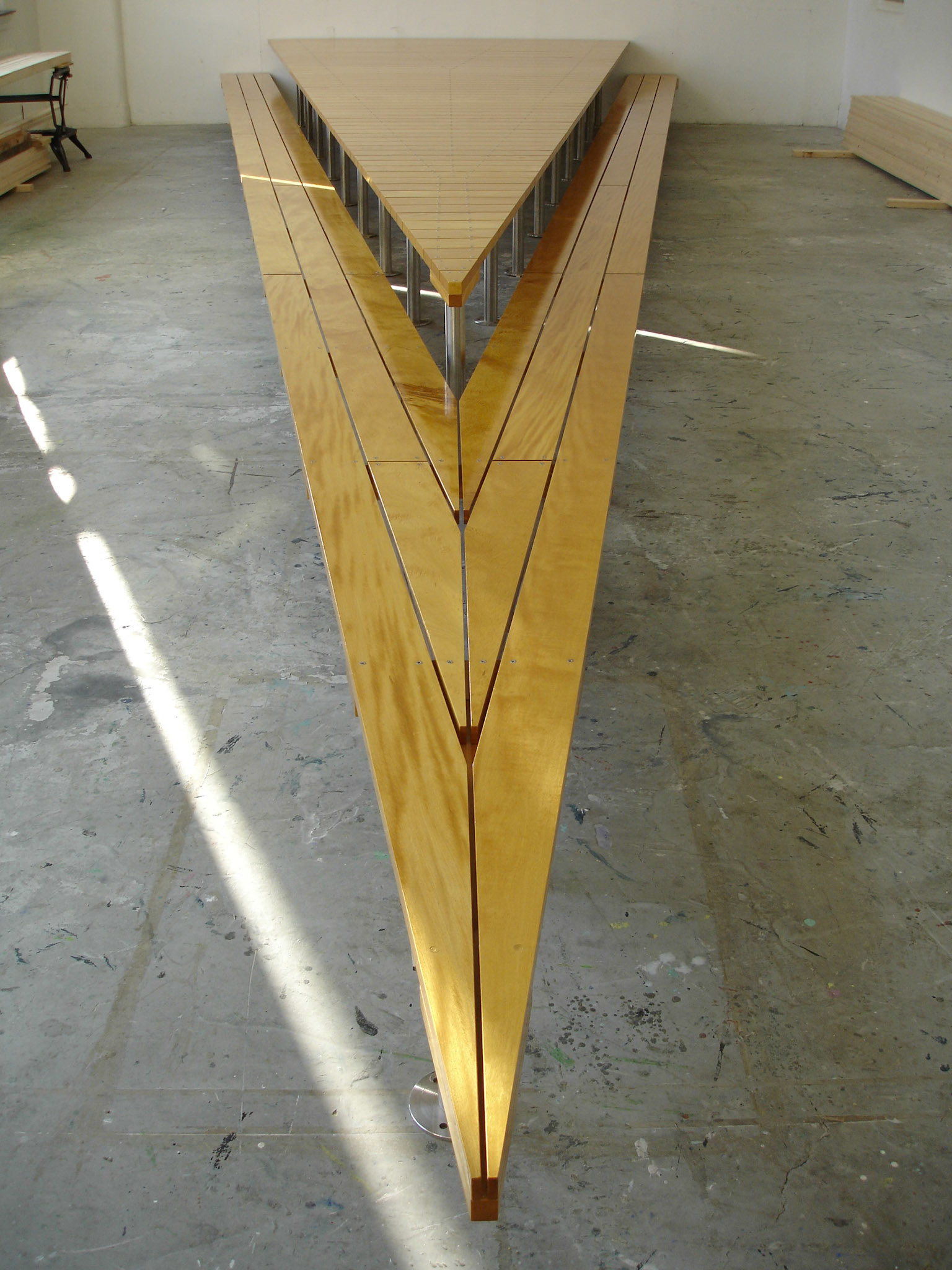
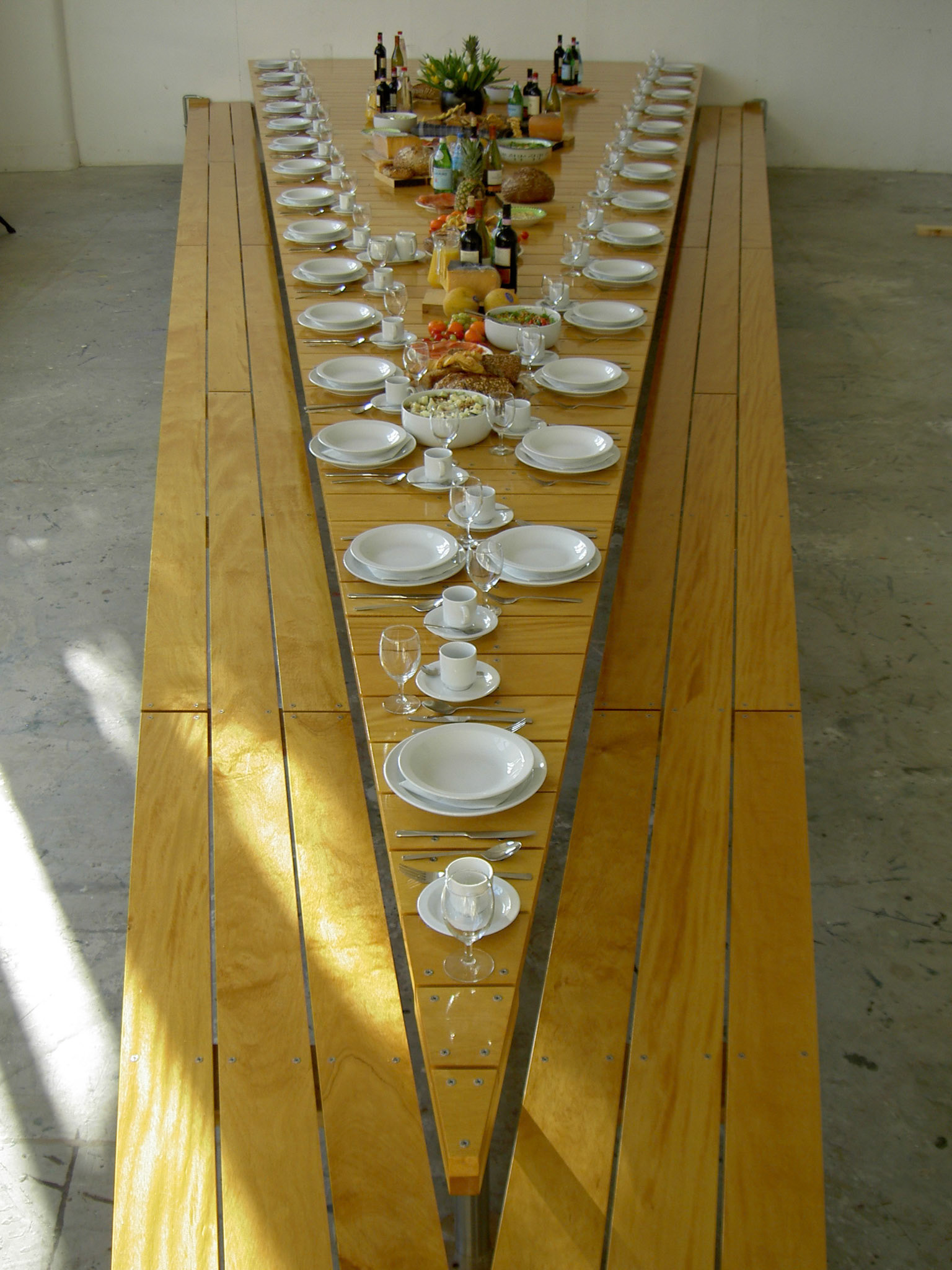
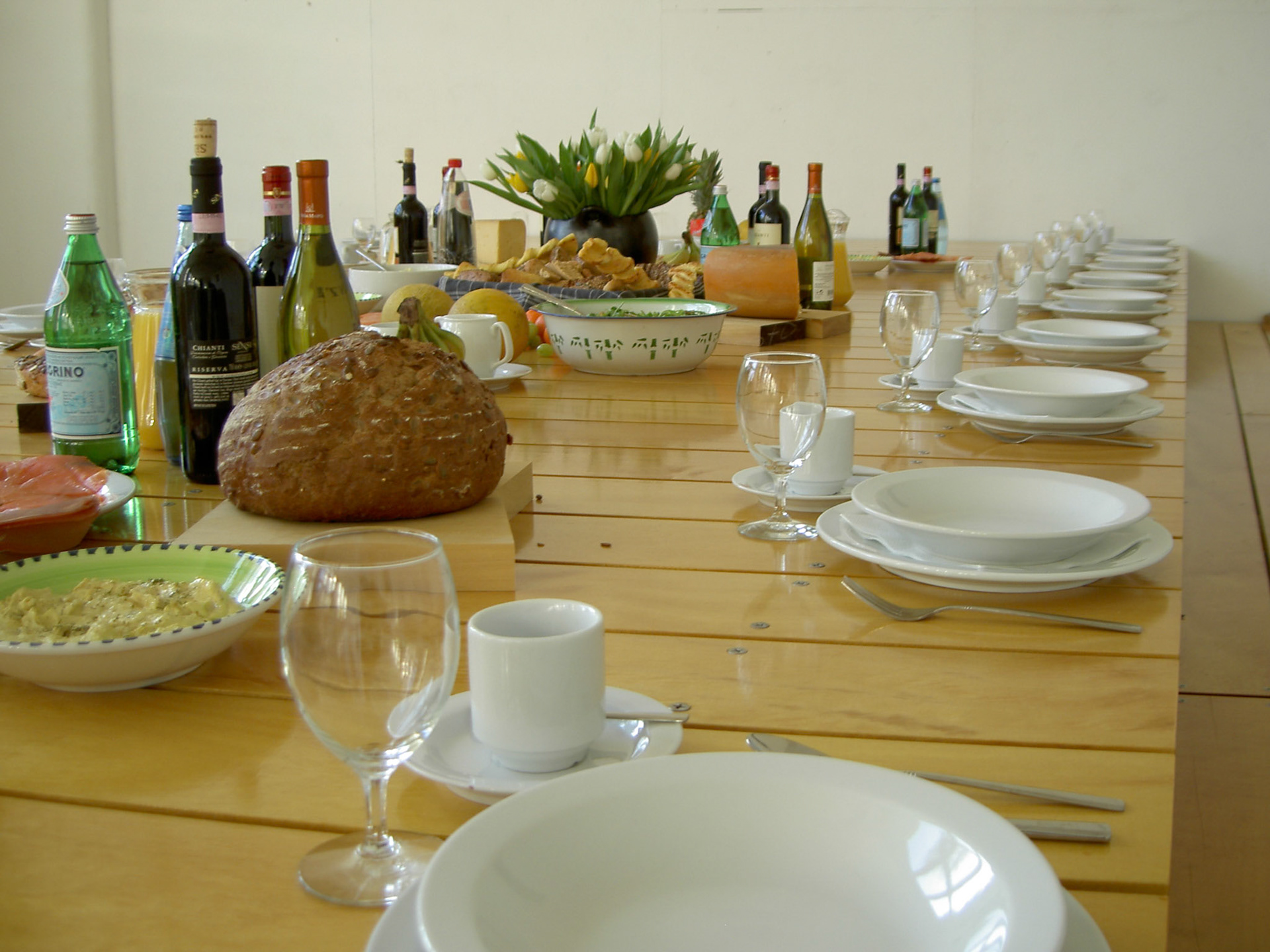
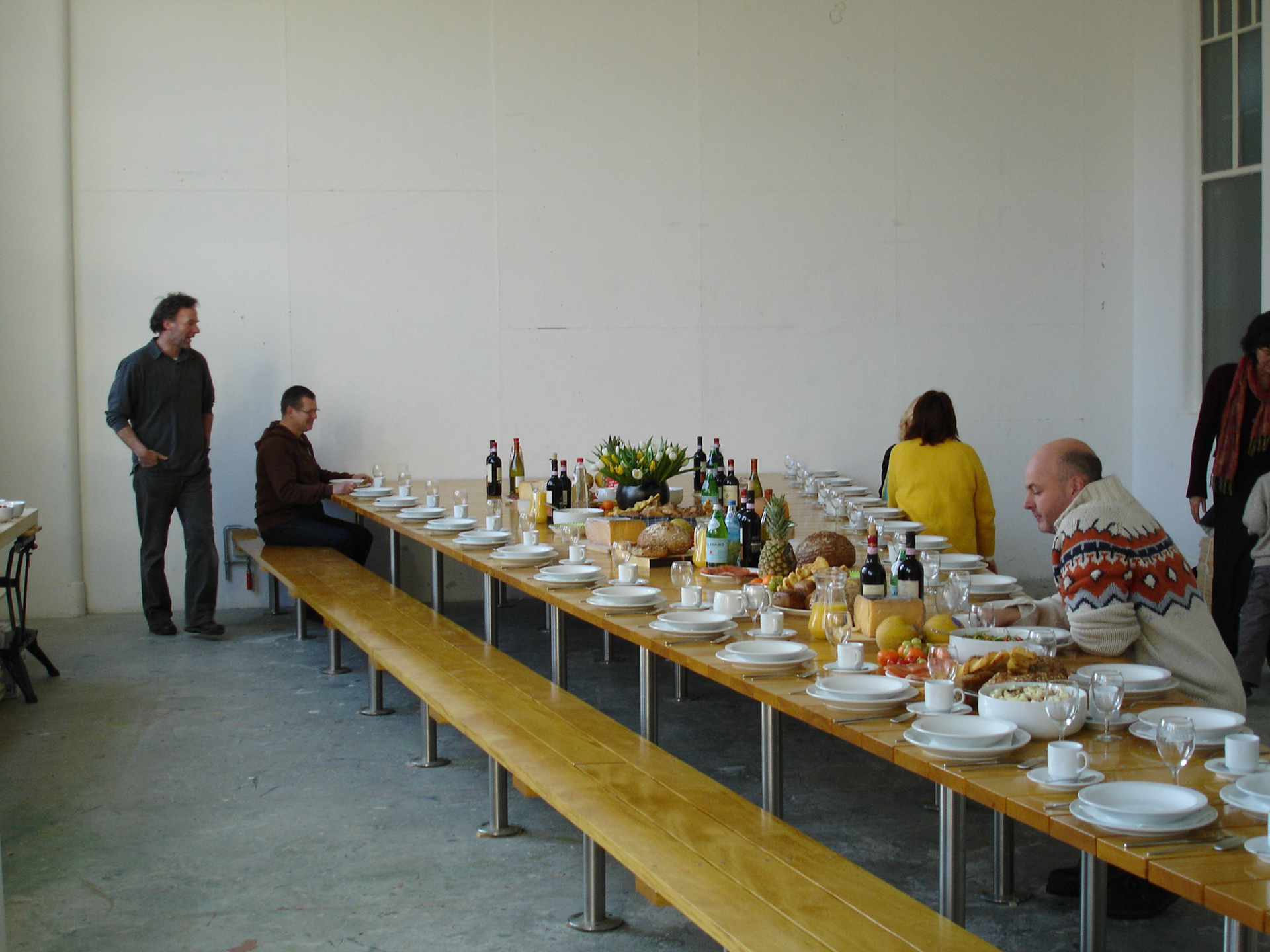
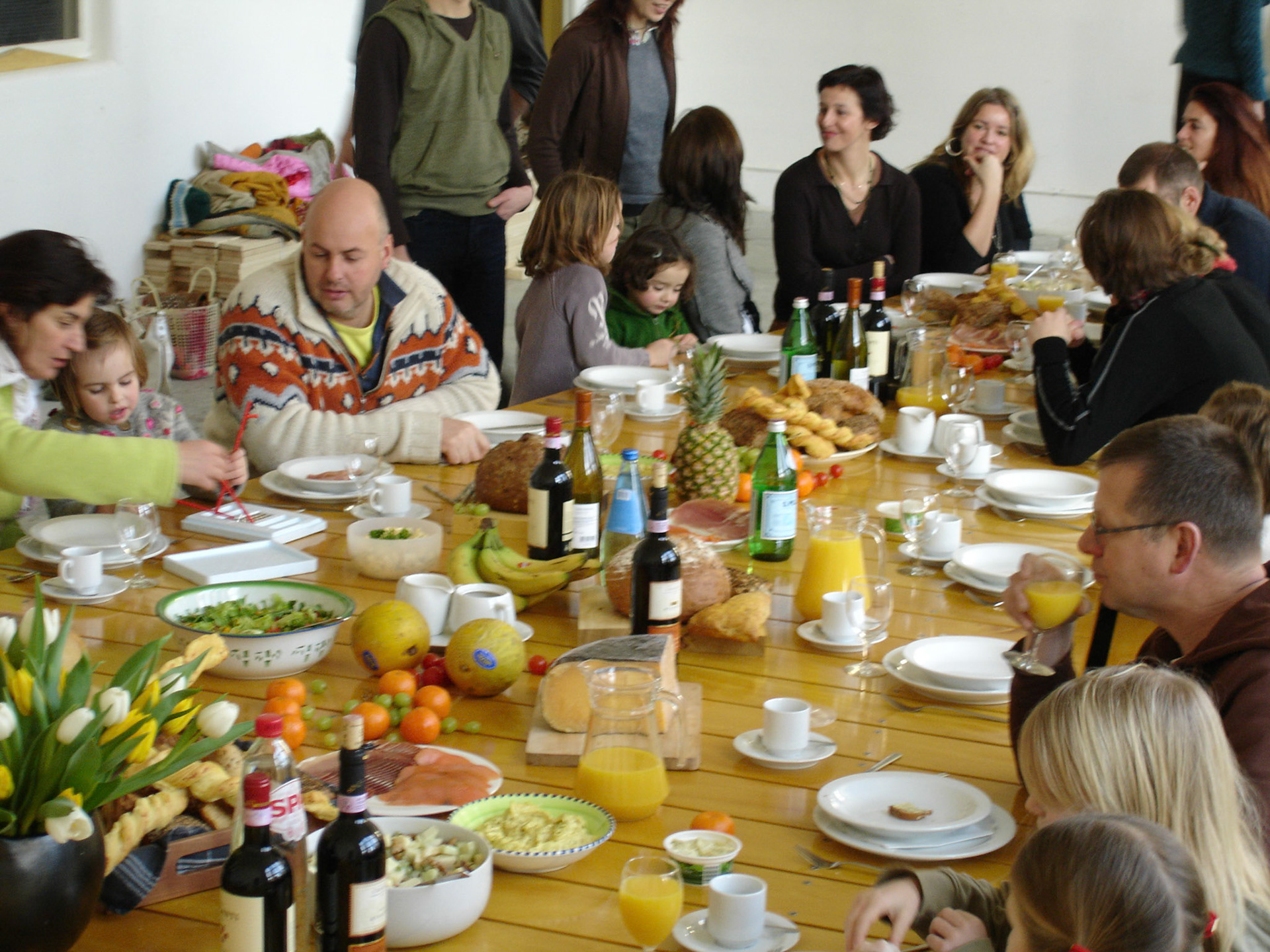
Commissioned by the City of Bernheze (nl)
Even a failed project can lead to a good object. It’s a strange story. The NBKS, a foundation for visual art in the Dutch province of North Brabant, invited Doorenweerd to work with the municipality of Bernheze to create a work of art in the village’s new urban development. He was intrigued by the urban design, which was based on a number of wedge-shaped areas that visually drew the surrounding countryside into the development. From within any one of these wedges – which pressed deep into the district – you could still see the countryside. This inspired Doorenweerd to create a picnic table in the shape of a very large triangle, a full 10 m long and 3.3 m wide, with benches on the long sides converging into a sharp point. The table was mounted on a concrete base 18 m long and almost 5 m wide. The plan was to place it in such a way that it would seem as if the whole area had been designed around it. ‘A little like throwing a pebble into a pond,’ says Doorenweerd. ‘Of course, it had happened the other way round, but that sort of tension really was present; the whole point was the shape and the situation. It was pioneer furniture, you might say. The idea was that a new community would form, with its own neighborhood association. The association was already being established, in fact, and this project was one of its first items of business. Alongside the table’s formal relationship to the layout of the development, it was also just a thing, a place for people to have a barbecue or a birthday party for their kids.’ The bench ran along the two long sides of the table, but not along the short side. That made the work seem almost as if it could have been infinitely long, but happened to have been sawn off at a particular point. For months, Doorenweerd sweated over his creation. Every board must have passed through his hands five times, as he sanded them, varnished them, and drilled neat countersinks for the screws. But when everything was finished and he phoned to find out whether he could come install the gigantic table, he was asked whether he had seen the new plan for the development. Guess what? The entire wedge had disappeared. Doorenweerd says, ‘It was too painful for words. Incredibly embarrassing for everyone involved. They were really putting pressure on me to come up with a solution and take responsibility for the situation. But that was impossible; the whole thing had become utterly absurd.’ He found himself writing an awful lot of letters. A dead-lock ensued. What was going to happen? Who owned the project? The table was put to the test with a festive meal for friends at Van de Nieuwe Dingen, the studio in Tilburg where Doorenweerd had built it (and into which, curiously enough, it fit perfectly). It turns out to seat quite a lot of people. After some time the work was placed in a site where it was not intended and has no artistic value in relation to its context. It is not an artwork anymore, it is just a large triangular table. It functions well as such. (Elly Stegeman)